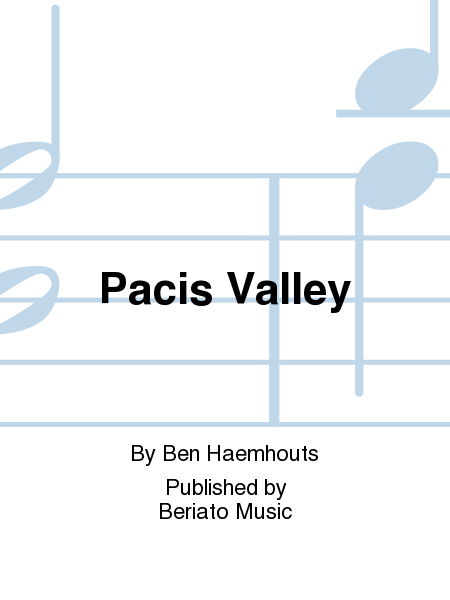Pacis Valley
Details
Description
SKU: BT.0404-1-219
Composed by Ben Haemhouts. Concert works. Score and set of parts. Duration 0:09:30. Published by Hal Leonard Europe (BT.0404-1-219).Heindonk ('heather in the marshland'), a small Flemish village of a mere 600 inhabitants, is situated where the rivers Dijle and Nete meet. The title of the work is from the Latin 'Vallis Pacis' (valley of peace) and this is also the name of a convent which was founded in the 15th century by the canonesses of Saint Augustine. In this work, which was commissioned by the brass band of Heindonk Iever maakt Vooruitgang, the duality of themes is central. 1. The name Heindonk is the composition of Hei (heather) and Donk (marshland). 2. The village is situated where two rivers converge. 3. It has in former times been the victim of two natural disasters. The first disaster struck in 1549: Heindonk was hit by heavy storms and floods. The small village was struck by a second destructive disaster only a few years later. This is when the convent was flooded so badly that the sisters were trapped for months in their convent and could only leave by boat. In addition, the entire harvest, all the hay and straw were destroyed and the financial problems accumulated to such an extent that the sisters were forced to leave the convent in 1552. This composition is based on these two main themes that are intricately woven throughout the entire piece. These themes were composed in minor key in order to emphasize the dramatic events that occurred. The piece begins with the introduction of the first dramatic theme. A slow introduction, with the melody in euphoniums, is a prologue which is subsequently played by the whole orchestra. The first main theme integrates into the whole (bar 39). The second dramatic theme is presented from bar 68. A timid and rhythmical allegro depicts the stormy events programmatically and is followed by an optimistic intermezzo in major which symbolises hope. Following a number of variants on the two main melodies in major, the theme of the prologue can be heard for the last time in a grandiose finale.

 Share
Share